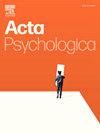Psychometric properties of the Persian version of Triarchic Psychopathy Measure (TriPM) in Iranian university students and clinical samples
IF 2.1
4区 心理学
Q2 PSYCHOLOGY, EXPERIMENTAL
引用次数: 0
Abstract
The Triarchic Psychopathy Measure (TriPM) assesses the Boldness, Meanness, and Disinhibition dimensions of psychopathy. This study evaluated the psychometric properties of the Persian TriPM in university students (n = 941, aged 18–67, Mage = 28.36, SD = 9.09; 39.1 % male) and a male clinical sample (n = 188, aged 18–65, Mage = 35.05, SD = 10.75) in Iran. Exploratory Structural Equation Modeling (ESEM) supported the original three-factor model only in the clinical sample, though with notable instances of poor item functioning (e.g., low loadings and high cross-loadings). In the students' sample, Exploratory Factor Analysis (EFA) identified a four-factor model: Leadership, Callousness, Impulsivity, and Antisocial which also fit in the clinical sample and demonstrated acceptable internal consistency across both samples. Furthermore, the Meanness and Disinhibition dimensions and their equivalent domains in the four-factor model yielded expected associations with external correlates in both samples. However, the Boldness and Leadership domains showed inconsistent associations with external correlates in the clinical sample, unlike the hypothesized correlations observed for Leadership in the student sample. Overall, findings highlight inconsistencies in the TriPM's alignment with the triarchic model of psychopathy and suggest a need for further refinement of the measure based on theoretical and empirical insights. We discuss directions for future research.
求助全文
约1分钟内获得全文
求助全文
来源期刊

Acta Psychologica
PSYCHOLOGY, EXPERIMENTAL-
CiteScore
3.00
自引率
5.60%
发文量
274
审稿时长
36 weeks
期刊介绍:
Acta Psychologica publishes original articles and extended reviews on selected books in any area of experimental psychology. The focus of the Journal is on empirical studies and evaluative review articles that increase the theoretical understanding of human capabilities.
 求助内容:
求助内容: 应助结果提醒方式:
应助结果提醒方式:


